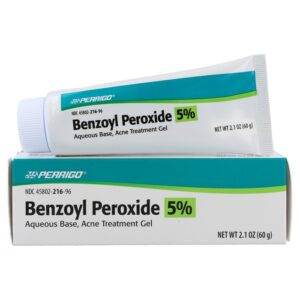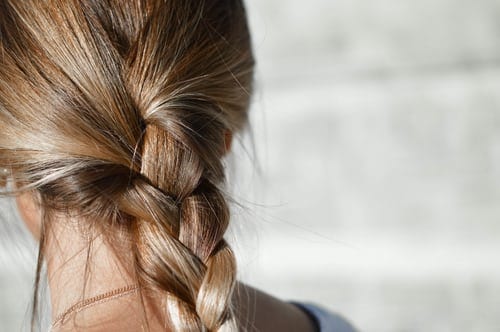Benzoyl Peroxide is an acne medication that has been effective in treating acne. It is also a popular ingredient in many hair-lightening products and is available in some bleaching creams. But does it bleach the hair?
Benzoyl Peroxide does not bleach your hair; it breaks down the protein bonds of melanin, which causes dark pigments to fade away and reveal lighter hairs beneath them.
Here Are Some Things to Keep in Mind When Using Benzoyl Peroxide for Your Skin
Benzoyl peroxide (BPO) will lighten your hair if left on long enough or applied liberally to a large area of the scalp or face, but it’s unlikely that it would cause a visible change over time. Acne treatments typically take months before they yield results, so there’s no need to worry if your hair doesn’t lighten immediately.
Benzoyl peroxide is also used in many skin bleaching products because it effectively removes the dark pigmentation associated with age spots, sun spots, acne scars, freckles, etc. Application of the chemical will not cause any damage or adverse side effects to your skin or hair, but it will take time before any results are visible.

How Does It Work
Benzoyl Peroxide breaks down the protein bonds of melanin, which causes dark pigments to fade away. An exfoliant removes the top layer of skin where the melanin pigment originates and lightens these spots without damaging your skin or scalp.
How Often Should You Use It
You should apply Benzoyl peroxide to the affected area twice a day for about ten days. You should notice it working after about two weeks. If you do not, consult your doctor or dermatologist before trying another treatment method.
Are There Other Uses For This?
Benzoyl Peroxide is often used in many skin-lightening products because of its ability to break down the protein bonds of melanin. It is also used in many acne treatments because it breaks up blackheads and reduces swelling, redness, inflammation, and pain associated with acne flare-ups.
Benzoyl peroxide has been ideal for treatment purposes since the early 1900s with little or no known side effects. Since then, it has been part of many products, thus considered safe for consumers.
Does Benzoyl Peroxide Bleach Hair?
You can use Benzoyl Peroxide on the hair for lightening purposes. Its effect is similar to that of hydrogen peroxide. It is milder than hydrogen peroxide but more effective than any other substance used for lightening hair.
Benzoyl peroxide is safe and suitable for cosmetic products, including those applied to the skin or scalp. There are no restrictions on the maximum level of 2.5% used in cosmetics, although concentrations greater than 10% should only be used under medical supervision.
The Side Effects Of Using Benzoyl Peroxide On Your Scalp And Hair
1. A tingling, burning, or itching sensation may occur.
2. Sensitivity to sunlight may increase, so you require extra protection after treatment until your skin adjusts.
3. If you apply it excessively, redness and peeling of the skin may occur.
To avoid the above side effects, you should only use benzoyl peroxide as an acne treatment.
Always follow the instructions on the label and allow your skin or scalp a few days to adjust before applying a more significant amount of BPO.
When Should I Not Use Benzoyl Peroxide On My Hair?
● People who are allergic to BPO should not use it.
● You should not apply this if you have sensitive, damaged, or sunburnt skin.
● Avoid getting benzoyl peroxide in contact with your eyes or mouth, and wash hands thoroughly after applying it to the face.
How To Apply Benzoyl Peroxide for Hair Lightening
- Cleanse your skin or scalp with mild soap and warm water before applying the cream.
- Apply a thin layer of it to the affected areas and allow it to dry completely before going out in the sun or into a tanning booth.
- Use it daily until you notice your skin/hair lightening and use it two to three times a week for maintenance.
- If required, you can cover the treated areas with a moisturizer or sunscreen or expose them to the sun regularly.
- You may notice your skin/hair getting lighter or redder during the treatment. If that occurs, reduce the number of times you apply benzoyl peroxide and always use a moisturizer after it dries.
- Avoid using excessive heat on treated areas as it may alter the color of your skin/scalp.
- It may take four to six weeks before you notice any positive effects of using benzoyl peroxide.
What Are the Alternatives to Using Benzoyl Peroxide on Your Hair?
1. Kojic Acid Creams and Gels
It is a natural acid found in nature, particularly in mushrooms and other fungi such as rice bran. Many have used it for many years to lighten skin, but it’s not as effective as benzoyl peroxide or hydroquinone.
2. Arbutin Creams, Gels, and Solution
Arbutin is available in many plants such as bearberry, cranberry, blueberry shrubs, pears, and most other fruits. Many have used it for years to lighten freckles, age spots, and hyperpigmentation but are not as effective as benzoyl peroxide or hydroquinone.
3. Azelaic Acid Creams and Gels
Azelaic acid is in barley, wheat, and rye. It has been treating acne since the 1990s but is not as effective as benzoyl peroxide or hydroquinone.
4. Licorice Root Creams, Gels, and Solution
Licorice root treats hyperpigmentation of the skin but is not as effective as benzoyl peroxide or hydroquinone.
5. Soy Milk Creams, Gels, and Solution
Soy milk contains niacinamide which treats hyperpigmentation of the skin but is not as effective as benzoyl peroxide or hydroquinone.
Conclusion
As you can see, benzoyl peroxide is the most effective and most straightforward treatment for skin and scalp lightening, and if it’s used correctly, there should be no side effects.
The best thing about using benzoyl peroxide for hair lightening is that you can get it over the counter without a prescription in any chemist shop or supermarket near you. Remember that the results may vary from person to person, so you may need to use it longer than usual or slightly increase the dosage to see positive effects.
